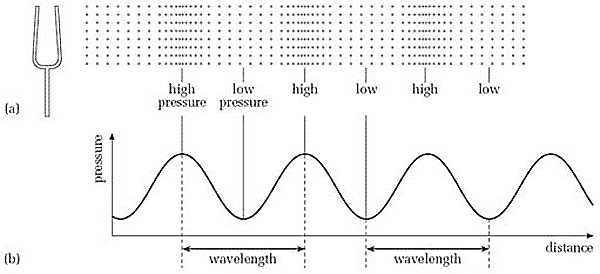
(A graph of the pressure wave produced by a tuning fork is a sine wave/The Open University)
In the process of making a digital music track, producers might involve sampling as a natural part of the creative process. Sampling is incorporating another sound recoding into our new track. The creative act of sample is nothing new and may create a legal headache since this constitutes copyright infringement:
- it is a breach of copyright in the original sound recording,
- it is a breach of copyright in the underlying music and lyrics,
- it constitutes an authorised use of one or more of the performances in the original work.
If the original artist isn’t credited or they object the act of sampling, their moral rights may be infringed.
Contrary to popular myth, samples aren’t billed on a per-second basis like some phone calls — nor are they free when under three seconds long. The overall impact of the sample, together with all relevant commercial factors, means that each sample is evaluated on a case-by-case basis.
A major artist may be able to charge tremendous price for the right to sample their work. They’ll probably expect an advance payment before the derivative work sold. An opportunistic publisher also may demand their cuts. The Verve learned this lesson the hard way, they did not cash in on the record sale success as much as they would have liked. Most of the royalties went to the Rolling Stones’ former manager Allen Klein.
Sampling clearance can be easy but might be a time-consuming process, especially if the rights holders are based overseas or where the track sampled has itself sampled another work. All original samples need to be cleared.
Apparently there’s a workaround. An artist can recreate something that sounds just like the original. Yes, it’s perfectly legal and there are companies like Replay Heaven and Scorccio, that could be employed for sample recreation.
On sample recreation, the keyword is copyright. In the music, there are copyright in mechanical recording (the audio) and copyright in the composition (or publishing, e.g. written lyrics or music of the song). With sample recreation/replays, the mechanical copyright is not infringed upon, because the sample has been “covered” by someone else, made brand new and usually long after the original artist first record it.
But the publishing copyright remains to be cleared – because the composition of written lyrics and/or music usually remains unchanged. Ultimately, according to UK, EU & U.S. music law, a sample replay is classified as being in the exact same category as a “cover version”. Despite the fact that it may sound like a virtual “clone” of an original work – as long as it is a brand new recording, then a “cover version” is exactly what a sample replay is.
Still, royalties need to be paid to the original publisher.
It’s a simple case of approaching the publishing company for the song, and obtaining their approval. You could also apply on-line, via clearance company websites. 99.9% of the time, publishers are very happy to see their repertoire covered – that is exactly what their service is about and how they make a profit for themselves and their respective writers.
The amount they decide for the % of publishing depends upon how much of their “original work” (as they call it) has been used in the “new work” (i.e. your new track). If your 4 minute track includes 3 minutes of their “work”, then the % is likely to be very much in their favour.
Or we can just go underground and expect the record will not be a hit.